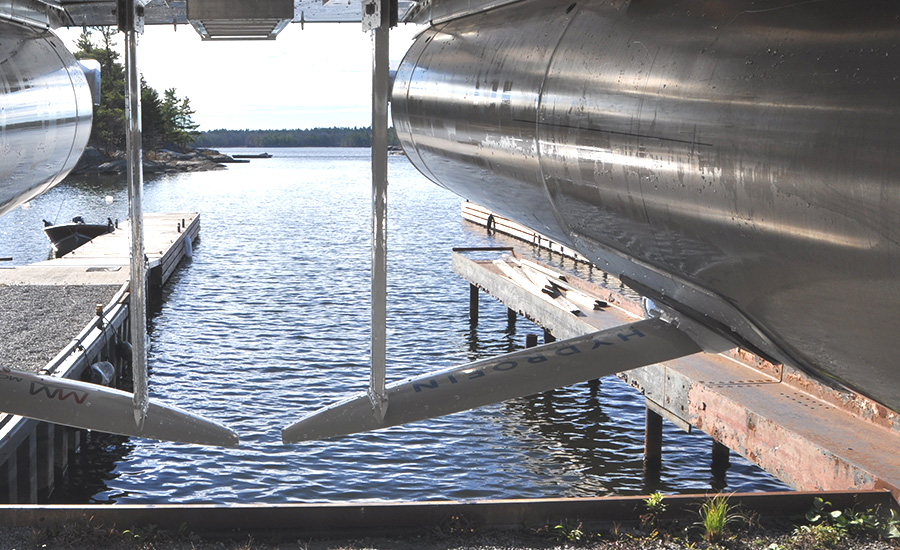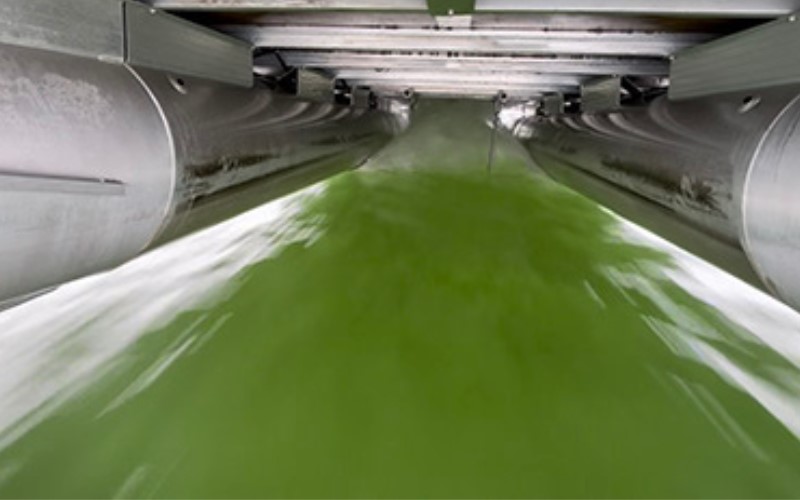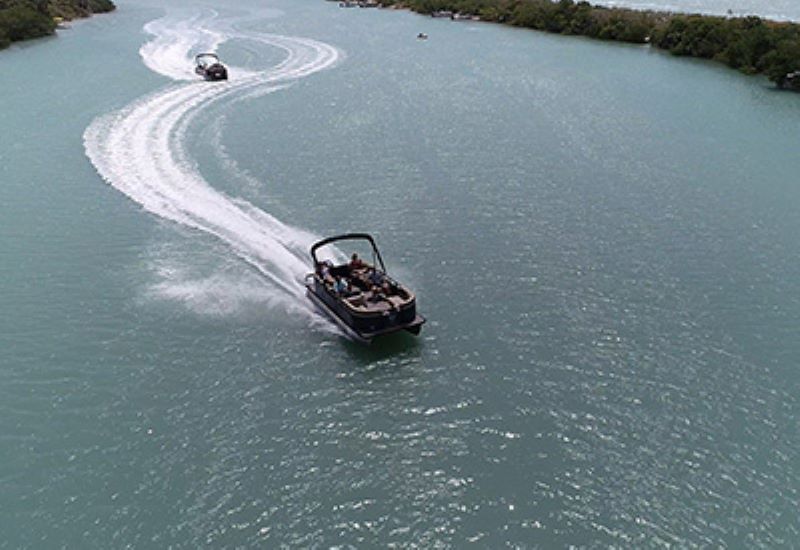Can A Pontoon Boat Fly?
By Andy Adams
We try out a pontoon equipped with Hydrofin foils
In my role as Managing Editor of Canadian Yachting magazine, I see both power and sailboats, from small to grand, and I also watch the development of cutting-edge SailGP and America’s Cup boats with interest and amazement. These are the pinnacle of racing development and they sail at 50-knot speeds on outrageous foil appendages. The performance is stunning, but I could never imagine a family boat being equipped with these huge foils.
The forward foils are adjustable to “dial-in” the performance when the Hydrofins are first installed.
Well, it seems that I just needed to expand my understanding of foiling to imagine what actual pleasure craft foils could look like. For some boats, I do think foiling could well be the future, especially for electric power. The Swedish boat Candela uses foils to lift the whole boat clear of the water riding on just the foils and the electric drive. That is a very impressive boat, but I understand that the foils need to be computer-controlled, making minute adjustments on the fly and that leads to a significant purchase price.
Then I heard about Hydrofin. It turns out that foiling is not a dream; there are foiling solutions coming to the market right now, and for ordinary family boats too!
Last fall, I travelled to Moon River Marine near Mactier, Ontario to meet with Jason Minor, inventor of the Hydrofin system. These are foils that can be added to ordinary pontoon boats for a big boost in performance and economy.
This is the starboard side rear fin, attached to the tube using industrial adhesives. It’s not much bigger than my outstretched hand but that’s all it takes to lift the stern at about 20-MPH.
We met with Chris Holmes from J-Craft ski boats and Chris brought a new two-tube Bellagio pontoon boat equipped with a 115 HP Yamaha V-Max. Jason and his assistant Kyler Patton had worked with Chris and the crew at his company to install a set of Hydrofin foils on the new two-tube pontoon. I was there to go for a ride.
You are probably aware that there are both two-tube and three-tube pontoon boats. The three-tube models tend to behave like a vee-bottom boat, riding high, banking into turns and as long as they have sufficient power, the triple models are pretty fast.
Two-tube pontoons were the original pontoon design and typically, these are not fast, they lean out on the turns and push a lot of water around as they go. Top speeds of 20 to 25-MPH are typical and it takes a lot of power to go much faster, unless the pontoon has foils!
Jason and Kyler had arrived the day before and installed the Hydrofin system. Jason Minor’s invention was developed by the noted firm of Morelli & Melvin Engineering with their knowledge and experience on America’s Cup boats. The Hydrofin foils are impressively simple and not at all like the huge foils of America’s Cup boats. On the two-tube Bellagio pontoon, they were simply not visible in the water and they were barely noticeable when the boat was up in the air on the marina forklift. Most owners would likely pay no attention to them at all in day-to-day use.
But with the Hydrofin foils freshly installed, you could feel the Bellagio lift and pick-up speed as we passed the 20-MPH mark. Later, after a few adjustments were made, Chris saw 38 mph on the GPS. That’s a remarkable speed for a big two-tube pontoon with just 115 HP. There was very little side-spray and with the Hydrofin foils, the boat banked into turns more like the way a vee-bottom does.
Jason Minor kneels in the gravel launch ramp to adjust the angle of the forward fins they just installed on the Bellagio pontoon.
Overall, the boat steered better with the Hydrofins installed, and accelerated better. On the Bellagio, we saw the top speed rise from about 27-MPH before the Hydrofins were installed to 36-MPH after and later with trim changes, 38-MPH. Jason Minor has installed Hydrofins on many pontoons now and although every boat is different, he said that at average speeds, the boat would experience 30-40% better fuel economy.
Imagine a two-tube pontoon owner with a medium horsepower outboard that struggles to reach 25-MPH maximum, gaining 8 to 10-MPH in top speed while using less fuel. With Hydrofins that pontoon could even pull a water-skier or plan off a bigger load.
The Hydrofin foils are reasonably priced too – around $4,000 USD installed. If you have reasonable DIY skills, you can install them yourself. They include instructions and a range of simple adjustments to help you dial-in the best results.
I recall some years ago, looking at the early America’s Cup boats with their huge, ungainly foils and thinking, how will this ever benefit ordinary family boating? Well, now I know.


